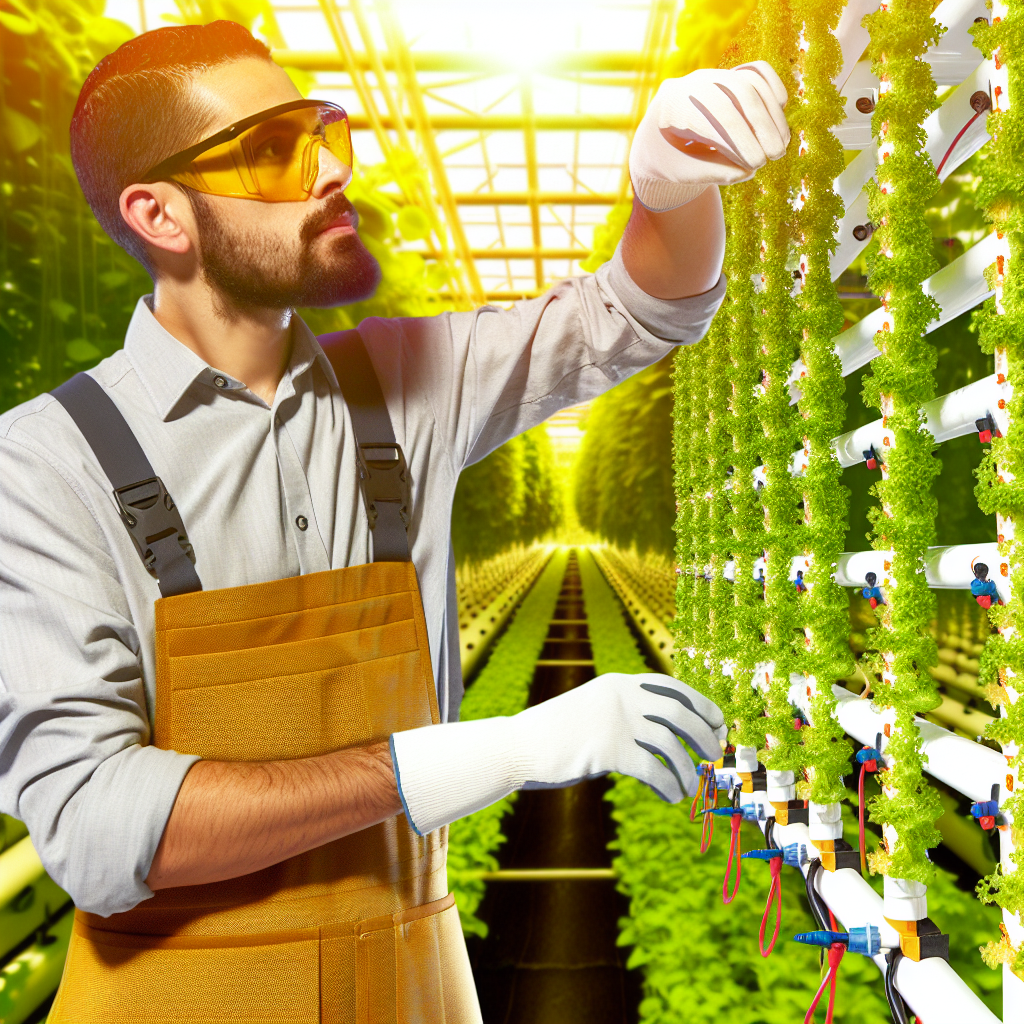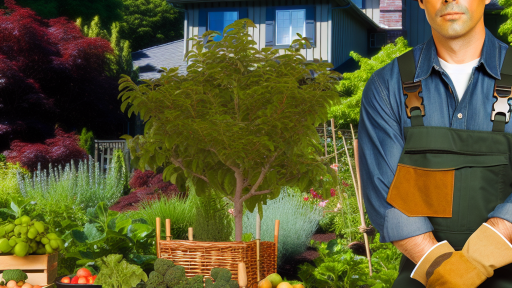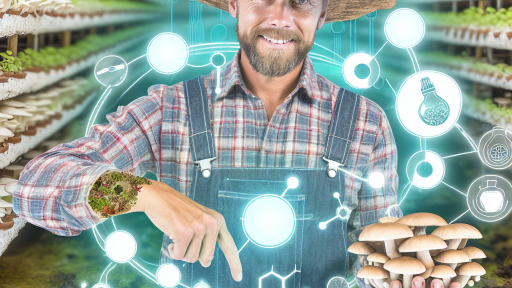Introduction to Hydroponics
Hydroponics is a method of growing plants without soil.
This innovative approach uses nutrient-rich water instead.
As a result, it allows plants to absorb nutrients more efficiently.
Hydroponics offers numerous benefits for both gardeners and farmers.
Benefits of Hydroponics
This method conserves water compared to traditional farming.
In fact, it uses up to 90% less water.
Moreover, it can lead to faster plant growth.
Plants often grow 30-50% faster in hydroponic systems.
Additionally, hydroponics enables year-round production.
This eliminates seasonal limitations on crop yields.
Applications of Hydroponics
Hydroponics is popular among home gardeners and commercial growers.
Urban farming ventures increasingly adopt hydroponic systems.
Restaurants also benefit from growing fresh herbs on-site.
Moreover, hydroponic systems are crucial for food security.
They can produce food in areas with poor soil quality.
Transform Your Agribusiness
Unlock your farm's potential with expert advice tailored to your needs. Get actionable steps that drive real results.
Get StartedIn remote locations, hydroponics provides access to fresh produce.
Key Components of Hydroponic Systems
Nutrients
Nutrients are vital for the growth of plants in hydroponic systems.
They provide essential elements for photosynthesis and overall health.
The right balance of macronutrients and micronutrients is crucial.
Common macronutrients include nitrogen, phosphorus, and potassium.
Micronutrients such as iron, manganese, and zinc also play important roles.
A well-formulated nutrient solution promotes robust plant growth and yields.
Water
Water serves as the primary medium for hydroponic systems.
It facilitates nutrient absorption and provides hydration for plants.
Water quality directly impacts the health of the plants.
Using filtered or distilled water can reduce contaminants.
Monitoring pH levels ensures optimal nutrient availability.
Light
Light is essential for photosynthesis in hydroponic systems.
Grow lights can supplement natural sunlight when necessary.
Different plant species require varying light intensities and durations.
LED lights are popular due to their energy efficiency and longevity.
Understanding light spectrum helps in selecting appropriate lighting.
Vertical Farming: Maximizing Space Efficiency with Hydroponics
Introduction to Vertical Farming
Vertical farming is revolutionizing agricultural practices.
It allows for crops to be grown in stacked layers.
This method effectively utilizes limited space in urban environments.
The Benefits of Vertical Farming
Vertical farming drastically reduces water usage.
Moreover, it minimizes the need for pesticides and herbicides.
Additionally, it enhances food security by bringing food closer to consumers.
Key Design Ideas for Vertical Hydroponic Systems
Architects and farmers alike can innovate in their designs.
Showcase Your Farming Business
Publish your professional farming services profile on our blog for a one-time fee of $200 and reach a dedicated audience of farmers and agribusiness owners.
Publish Your ProfileLayering Techniques: Consider implementing multi-tier shelving units.
These structures can host different types of plants simultaneously.
Modular Systems: Design hydroponic systems that are modular.
This allows for easy expansion in response to demand.
Efficient Lighting Solutions
Lighting plays a crucial role in vertical farming.
Utilize LED grow lights for energy efficiency.
Position lights to minimize shadows across the growing area.
Automated Nutrient Delivery
Automation streamlines the maintenance of hydroponic systems.
Employ sensors to monitor nutrient levels in real-time.
This approach ensures optimal growth conditions for plants.
Choosing the Right Plants
Selecting plants suitable for vertical farming is essential.
Leafy greens like lettuce thrive in these systems.
Herbs such as basil and parsley also adapt well.
Challenges and Considerations
Despite the advantages, vertical farming has challenges.
Initial setup costs can be high for new farmers.
Additionally, maintaining consistent environmental conditions is critical.
The Future of Vertical Farming
Looking ahead, vertical farming will grow in popularity.
As technology advances, systems will become more efficient.
Moreover, the global demand for sustainable food sources will drive innovation.
Learn More: Maintaining Water Quality in Aquaponics
Choosing the Right Hydroponic System
Overview of Hydroponic Systems
A hydroponic system enables plants to grow without soil.
Instead, these systems use nutrient-rich water solutions.
Each type offers unique advantages and challenges.
Understanding these options helps in making informed decisions.
Types of Hydroponic Systems
Different hydroponic systems cater to various growing needs.
Common types include Nutrient Film Technique (NFT), Deep Water Culture (DWC), and Ebb and Flow.
Each system influences plant health and growth efficiency.
Nutrient Film Technique (NFT)
NFT involves a continuous flow of nutrient solution over plant roots.
This method enhances nutrient absorption and oxygen availability.
However, it requires precise control over water flow.
Additionally, any disruption can stress the plants.
Deep Water Culture (DWC)
DWC keeps plant roots submerged in oxygenated nutrient solution.
This method encourages rapid growth and larger yields.
However, it is essential to monitor oxygen levels carefully.
Too little oxygen can lead to root rot and plant death.
Ebb and Flow
Ebb and Flow systems periodically flood the plant roots with nutrient solution.
This flooding allows for oxygen access during drainage phases.
While efficient, it demands careful timing and maintenance.
Any errors may result in plant stress or nutrient imbalance.
Considerations for Choosing a System
Choosing the right system depends on your specific situation.
Showcase Your Farming Business
Publish your professional farming services profile on our blog for a one-time fee of $200 and reach a dedicated audience of farmers and agribusiness owners.
Publish Your ProfileConsider factors such as space, budget, and crop type.
Also, evaluate your experience level with hydroponics.
Space Availability
Assess the space you have for your hydroponic setup.
NFT systems require less space than Ebb and Flow systems.
Thus, choose a system that fits your growing area well.
Budget Constraints
Your budget influences the choice of hydroponic system.
DWC systems are typically more affordable to set up.
On the other hand, NFT systems may involve higher initial costs.
Crop Type
Different crops thrive better in certain systems.
Leafy greens often perform well in NFT and DWC systems.
However, fruiting plants may benefit more from Ebb and Flow.
Experience Level
Your experience with hydroponics should guide your choice.
Beginners might prefer simpler systems like DWC.
Conversely, more experienced growers can manage NFT or Ebb and Flow.
Find Out More: Heirloom Gardening Techniques for Small Farms
Innovative Materials for Hydroponic Growth Media
The Role of Growth Media in Hydroponics
Growth media serve as the foundation for hydroponic systems.
They provide essential support to plants, allowing for optimal growth.
Choosing the right media affects the overall success of the system.
Commonly Used Hydroponic Growth Media
Several materials remain popular within the hydroponic community.
These materials vary in their properties and effectiveness.
- Coconut coir offers excellent water retention.
- Rock wool provides good aeration and excellent drainage.
- Pearlite and vermiculite enhance aeration while retaining moisture.
- Hydroton clay pellets are reusable and provide excellent drainage.
Emerging Alternatives to Traditional Media
Innovations in the field introduce new materials for growth media.
These alternatives offer unique benefits that can enhance plant growth.
- Biochar improves soil health and increases nutrient availability.
- Hemp hurds serve as an environmentally friendly option.
- Recycled paper products provide a biodegradable solution.
Considerations for Selecting Growth Media
When choosing a growth media, consider various factors.
Evaluate water retention capabilities for your plant species.
Assess aeration properties to prevent root rot.
Consider sustainability and environmental impact as key factors.
Ultimately, the right choice supports a thriving hydroponic system.
Explore Further: Innovative Hydroponic Techniques for Farmers
Automation and Technology in Hydroponic Farming
Importance of Sensors in Hydroponics
Sensors play a vital role in hydroponic systems.
They help monitor environmental conditions effectively.
Temperature sensors ensure optimal growth conditions.
Humidity sensors track moisture levels in the air.
Moreover, light sensors optimize the light exposure for plants.
Types of Sensors Used
Several sensors contribute to efficient hydroponic farming.
- pH sensors measure the acidity of nutrient solutions.
- EC sensors gauge the electrical conductivity of the solution.
- Temperature sensors monitor both air and water temperatures.
- Moisture sensors check the water levels in the system.
Each type enhances the system’s performance individually.
Collectively, they provide comprehensive data about the environment.
Implementing Monitoring Systems
Monitoring systems integrate multiple sensors into one platform.
This integration allows real-time data collection and analysis.
Farmers can access this data through user-friendly interfaces.
Mobile applications simplify monitoring from anywhere.
Showcase Your Farming Business
Publish your professional farming services profile on our blog for a one-time fee of $200 and reach a dedicated audience of farmers and agribusiness owners.
Publish Your ProfileNotifications alert users to any critical environmental changes.
Benefits of Automation
Automation greatly enhances the efficiency of hydroponic systems.
It reduces the need for manual labor and human error.
Automated systems enable precise control over conditions.
This precision leads to higher yields and better quality produce.
Furthermore, automation saves time and resources in the long run.
Future Innovations in Technology
The future of hydroponics promises exciting advancements.
Artificial intelligence is expected to optimize growth patterns.
Data analytics will enhance decision-making processes for farmers.
Remote monitoring solutions will provide even more flexibility.
These innovations will make hydroponic systems more accessible and efficient.
Delve into the Subject: Heirloom Gardening Tools Every Farmer Needs

Sustainable Practices in Hydroponics: Energy Efficiency and Resource Management
Introduction to Sustainable Hydroponics
Sustainable hydroponics plays a crucial role in modern agriculture.
It promotes reduced resource usage while maximizing crop yield.
This approach prioritizes ecological balance and efficiency.
Energy Efficiency in Hydroponic Systems
Energy efficiency is vital for sustainable hydroponic systems.
Using LED grow lights significantly reduces electricity consumption.
These lights provide optimal light spectra for plant growth.
In addition, timers and sensors automate energy use.
This smart management ensures lighting aligns with plant needs.
Likewise, energy-efficient pumps minimize water circulation costs.
Coupled with renewable energy sources, these systems further enhance sustainability.
Resource Management Strategies
Effective resource management maximizes efficiency in hydroponics.
Recycling water is a cornerstone of sustainable practices.
Closed-loop systems capture and reuse nutrient solutions.
This technique significantly reduces water waste in cultivation.
Optimizing Nutrient Delivery
Controlled nutrient delivery supports healthy plant growth.
A concentration of nutrients tailors to specific crop needs.
This approach minimizes excess and maximizes resource use.
Reducing Waste and Maximizing Efficiency
Implementing composting and waste recycling enhances sustainability.
Organic waste can enrich substrates and promote biodiversity.
In turn, this practice strengthens the eco-friendly approach.
Technological Innovations for Sustainability
New technologies contribute significantly to sustainable hydroponic practices.
Automation systems optimize water, light, and nutrient inputs.
Moreover, real-time monitoring improves decision-making efficiency.
These innovations lead to more productive and sustainable crops.
Benefits of Sustainable Hydroponic Practices
Sustainable hydroponic practices offer numerous benefits.
They provide year-round crop production, regardless of climate.
Additionally, these methods reduce the carbon footprint of agriculture.
Finally, they promote local food production and decrease transportation emissions.
Showcase Your Farming Business
Publish your professional farming services profile on our blog for a one-time fee of $200 and reach a dedicated audience of farmers and agribusiness owners.
Publish Your ProfileDesigning for Scalability
Understanding System Capacity
Evaluate your hydroponic system’s current capacity.
This ensures you know how many plants you can support.
Consider the space and resources available for expansion.
A clearer understanding helps with future planning.
Choosing the Right System Type
Select a hydroponic system that allows for scalability.
NFT and DWC systems are popular scalable options.
They allow easy addition of more growing locations.
Consider a modular design for flexibility.
Implementing Modular Components
Use modular components for easy expansion.
Modular components simplify adding new sections.
They often come pre-configured and easy to integrate.
This approach saves time and costs in the long run.
Planning for Vertical Growth
Incorporate vertical growing techniques into your design.
This maximizes space without compromising yield.
Vertical systems can accommodate more plants per footprint.
Use stackable containers for efficient use of height.
Utilizing Automation and Technology
Incorporate automation technologies to enhance scalability.
Automated systems can manage nutrient delivery effortlessly.
Invest in smart sensors for monitoring growth conditions.
This technology reduces labor and increases efficiency.
Financial Planning for Expansion
Outline a financial plan for scaling your system.
Consider the costs of equipment and maintenance.
Budget for operational expenses as you expand.
A well-defined budget helps manage growth sustainably.
Engaging with Community and Resources
Network with other hydroponic growers for insights.
Community engagement fosters knowledge sharing.
Utilize online resources to learn best practices.
This collaboration can help you scale effectively.
Case Studies: Successful Hydroponic Designs and Their Outcomes
Urban Hydroponics by GreenGrow Farms
GreenGrow Farms implemented a vertical hydroponic system in New York City.
This system allows for maximum space utilization in urban environments.
By using LED grow lights, they significantly reduced energy costs.
Furthermore, GreenGrow achieved a 30% increase in yield compared to traditional farming.
The approach minimizes water use, using only 10% of what soil farming requires.
Commercial Scale Success at AquaCulture USA
AquaCulture USA established a large-scale hydroponic greenhouse in California.
This facility operates with a nutrient film technique to optimize growth.
They successfully produced over 1 million pounds of lettuce annually.
The farm employs advanced automation, enhancing operational efficiency.
Moreover, AquaCulture has minimized labor costs by 25% through these innovations.
Community Impact through Hydroponics in Denver
Denver Hydroponics Community Project created rooftop gardens in urban settings.
This initiative fostered community engagement and provided fresh produce.
Showcase Your Farming Business
Publish your professional farming services profile on our blog for a one-time fee of $200 and reach a dedicated audience of farmers and agribusiness owners.
Publish Your ProfileLocal schools participate, teaching students about sustainable agriculture.
The project serves as a model for community-driven food systems.
It contributes to local food security and environmental awareness.
Research Innovations at the Hydroponics Institute
The Hydroponics Institute launched a research program focused on system efficiency.
They discovered new nutrient blends that enhance plant growth rates.
These findings have been shared with commercial growers nationwide.
Additionally, the institute runs workshops to educate aspiring hydroponic farmers.
Such collaborations foster innovation and sustainability in agriculture.
Additional Resources
Micro Farming: Growing Wheat in Your Backyard : 4 Steps (with …
Center for Urban Agriculture & Gardening Education | College of …




